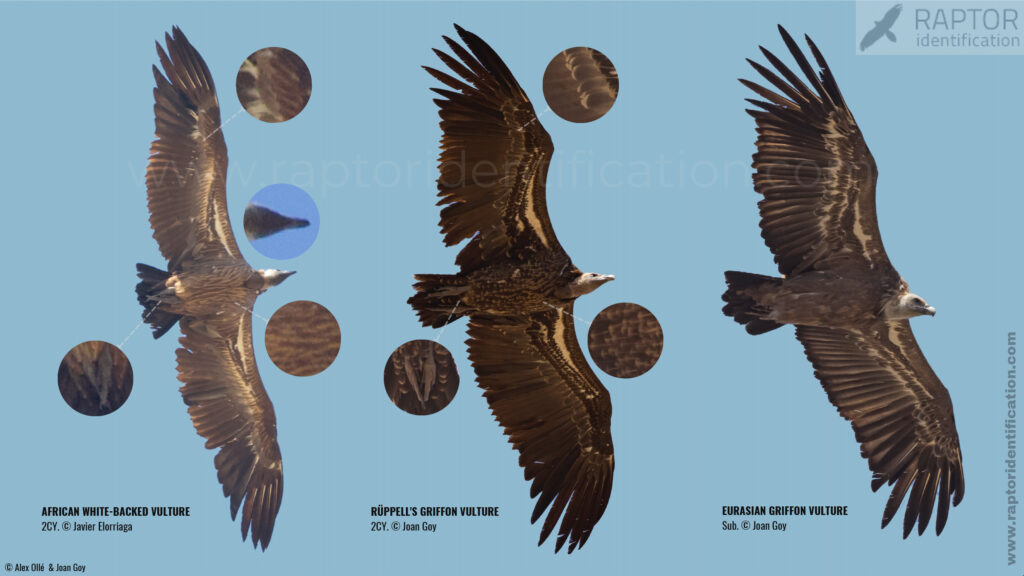Rüppell’s Griffon Vulture vs Griffon Vulture and vs African White-backed Vulture
AWBV:
- Short wings, closed hands, very slim body. Roughly 50% smaller than EGV and 30% than RGV.
- Has 12 tail-feathers. Dark greyish tarsus, blacker than other vultures.
- Short black bill, jet black facial mark.
- Black neck skin.
- Body feathers, especially undertail coverts, intermediate pale streaking lacking any spot at feather-tip.
- Dull greyish greater coverts, lacking any pale markings.
- Upperwing plain, uniform sandy/brown with uniform brownish greater coverts.
RGV:
- Relatively short wings, closed hand, slim body. Roughly 30% in weight of EGV, and it generally looks slimmer and less bulky bellied.
- Has 14 tail-feathers.
- Very long billed, flat forehead, bill becomes pale during second or third plumage.
- Neck skin deep red; blue circular patches. Dark feathers on the neck.
- Broad pale streaking with pale spots at feathers-tip (anchor in juveniles) in body feathers, especially in undertail coverts.
- Greater coverts black with pale tips, particularly evident in primary coverts; lacking lateral fringe.
- Upperwing scaled with several rows of black pale-tipped feathers (greater and median coverts).
EGV:
- Long-winged, square wings, massive body. Looking notoriously heavy and bulky both in flight and perched.
- Has 14 tail-feathers.
- Squared head, bill dark until third or fourth plumage.
- Neck skin blue-greyish; blue circular patches.
- Body feathers, especially undertail coverts, usually uniform although sometimes with a pale streaking.
- Greater and primary coverts from white to an almost black feather, but always entirely pale fringe.
- Upperwing plain, uniform griffon/sandy except dark greater coverts with a visible pale fringe.
Abstract from: Rodríguez, G. & Elorriaga, J. 2016. Identification of Rüpell’s Vulture and White-backed Vulture and vagrancy in the WP. Dutch Birding 38.



